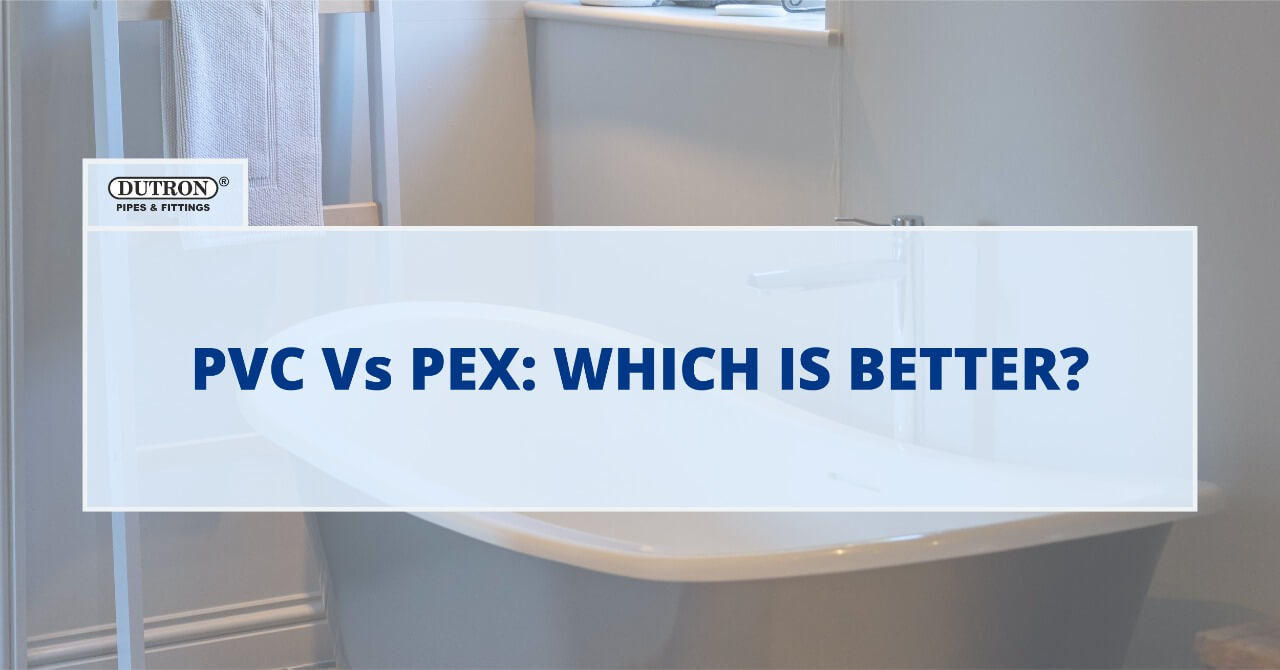
PVC (polyvinyl chloride) and PEX (cross-linked polyethene) materials are two of the most common pipe materials used for residential plumbing. The quality, cost and ease of installation of PVC and PEX pipes are some of the key factors to consider when deciding on the material for your plumbing job.
There are plenty of options when it comes to the material that you decide to use for your plumbing, but you may not be taking into account the differences that PVC and PEX can make in your home. This blog talks about the differences and how they can affect your home.
Advantages of PVC
PVC and CPVC are staples in the plumbing industry, accounting for the vast majority of plastic plumbing fixtures. These materials are the go-to choice for people looking for plastic piping in the United States, having been in use for more than 60 years. They’ve been tested and verified over time to be safe.
CPVC is normally utilised in only a few applications, whereas simple PVC can be used in practically all. PVC and CPVC, unlike PEX, can be utilised in outdoor, above-ground applications if the pipes are painted with water-based latex or acrylic paint.
PVC and CPVC are more cost-effective than PEX if you price clients by the hour, as they require many fittings secured by clamps cement. PVC and CPVC have more strength and durability than PEX because they are more rigid, making them better suited to outdoor applications where the piping may be subjected to trauma.
Disadvantages of PVC
Because of its rigidity, PVC is less flexible than PEX. You must install an elbow instead of simply bending it around a right angle. Not only will more materials be required when installing PVC and CPVC, but there will also be more connections, increasing the risk of leaks and failure.
PVC is not temperature-insensitive; water pressure fluctuates as the temperature changes. PVC and CPVC piping are prone to freezing and cracking, and PVC is only appropriate for cold water use. CPVC is required for pipes delivering hot water.
Although PEX offers certain distinct advantages over PVC plumbing, PVC and CPVC are still useful in many situations. Only PVC and CPVC can be used outside and above ground when properly coated, however PEX cannot. PEX appears to be here to stay, so knowing both PEX and PVC plumbing options is a good idea.
Advantages of PEX
PEX was first introduced in the 1980s and now accounts for 45% of the plumbing supply market. This material can be used to install both hot and cold water lines, as well as potable and non-potable water lines.
PEX tubing is more flexible than traditional plastic plumbing lines and requires fewer joints. The weather and humidity-resistant connections don’t require glue, torches, gauges, or intricate fittings to install that might break down with use. Instead, crimp fittings or cold-expansion rings are used to connect the tubing.
Disadvantages of PEX
The most significant disadvantage of PEX is the potential financial impact on your billings if you charge clients by the hour. While the material is inexpensive, the time it takes to connect it means you’ll finish the work faster than with PVC piping.
Keep in mind that not all PEX tubing is impermeable. If you’re utilising PEX fixtures to transport potable water (to a sink, for example), make sure you use certified impermeable tubing to avoid contamination.
PEX is significantly more vulnerable to UV than PVC. While brief exposure to sunlight during installation is acceptable, it cannot be used in above-ground or outdoor applications. PEX fixtures, on the other hand, are solely limited to indoor or underground outdoor use.
In this blog post, we examine the difference between the two most common pipe materials on the market, PVC and PEX. PVC has been around since the early 1900s and is still used in many homes today. PEX, on the other hand, is a newer material that is often more resistant to corrosion and pressure. So the choice of which pipe to use in your home is ultimately up to you.
About Dutron
Dutron Pipes are a leading manufacturer and supplier of PVC pipes and related products. Dutron Pipes is a pioneer in this industry with over 50 years of continuous operation, product development, and growth in the market. The company has attained a top position in terms of product development and innovation, customer service, and dedication to excellence.
Fell free to contact us if you have any requirements.
Dutron Plastics Pvt. Ltd. GSTIN: 24AABCD1495N1ZG
Dutron Plastics (Bharuch) GSTIN: 24AABFD3916F1ZX
Nippon Polymers Pvt. Ltd. GSTIN: 24AABCN0910C1ZB
Dutron Polymers Ltd. GSTIN: 24AABCD1496R1Z7
Registered and Corporate Office:
Near Mithakhali Underbridge
Navrangpura, Ahmedabad 380 009
Gujarat, INDIA
Tel: +91 79 26561849, +91 79 26427522
Fax: +91 79 26420894
Domestic: sales@dutronindia.com
International: exports@dutronindia.com
Information: info@dutronindia.com